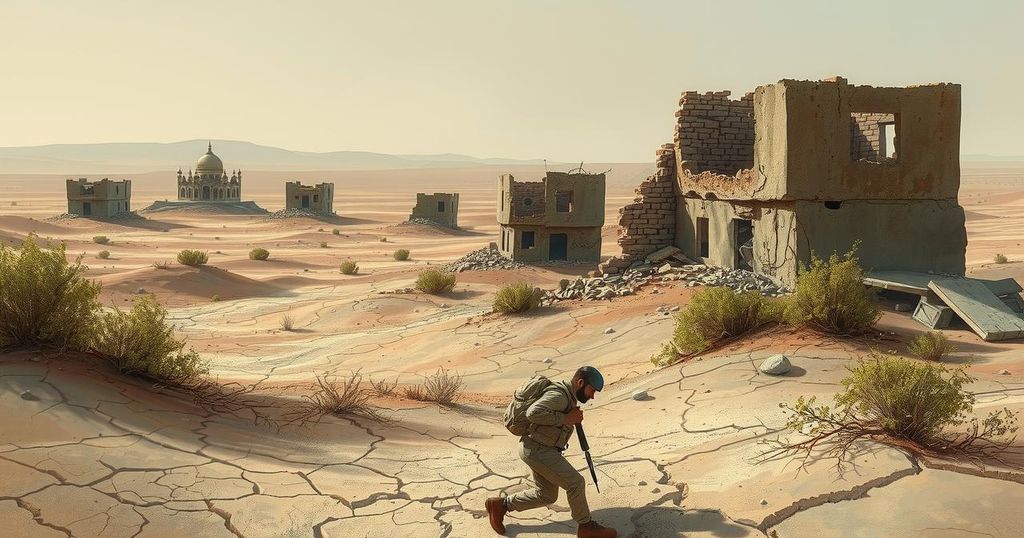Vladimir Putin and Donald Trump recently conversed for 1.5 hours, discussing a potential 30-day ceasefire in Ukraine, stopping attacks on energy infrastructure, and addressing issues related to Iran and Israel. While mutual interests for peace were expressed, specific conditions were set forth, and gaps remain, particularly regarding Ukraine’s response to these proposals.
On March 19, Vladimir Putin and Donald Trump engaged in a telephone discussion lasting approximately 1.5 hours, focusing on issues including Ukraine, Iran, and Israel. The Kremlin later reported that Putin agreed to halt attacks on Ukraine’s energy infrastructure; however, he set forth several conditions for a proposed 30-day ceasefire. Essential conditions outlined by Putin included effective ceasefire control, halting forced mobilization, and stopping the supply of new arms to Ukrainian forces.
The Kremlin emphasized that the credibility of Kyiv’s administration is questionable, citing prior agreements that were not honored. The Russian statement also pointed out recent attacks on civilians by Ukrainian militants in the Kursk region. During the conversation, Trump proposed that both sides cease attacks on energy infrastructure for a month, to which Putin reportedly responded positively and instructed the Russian military accordingly.
Key prerequisites for de-escalation included halting foreign military aid to Ukraine and ceasing intelligence transfers. The dialogue also briefly addressed the alleged encirclement of Ukrainian troops in Kursk, a claim denied by Ukrainian authorities and some Russian commentators. Trump expressed concern for the trapped soldiers, and Putin assured that humanitarian considerations would be observed in the event of enemy surrender, promising their safety under international law.
Additionally, Putin discussed “goodwill gestures,” including a planned prisoner exchange between Russia and Ukraine. It was indicated that these leaders commit to resolving the Ukrainian conflict on a bilateral level, supported by groups of experts from both nations. Other international matters were on the agenda as well, notably the situations in the Middle East and Red Sea, along with a cooperative stance on nuclear non-proliferation.
Both leaders acknowledged the potential for improved Russian-American relations, signifying a joint vote at the UN opposing an assembly resolution that labeled Russia an aggressor state. Enthusiastically, Trump endorsed Putin’s concept of organizing hockey matches between U.S. and Russian players, reflecting a lighter moment amidst serious discussions.
In contrast, the White House summary, provided by Press Secretary Karoline Leavitt, was more succinct and devoid of specificities compared to the Kremlin’s account, reinforcing the leaders’ agreement on pursuing lasting peace in Ukraine. The conversation reportedly included discussions on averting strategic weapons proliferation, with an emphasis on ensuring Iran does not pose a threat to Israel.
According to reports from the Washington Post, this dialogue between the leaders suggested a possibility of a partial ceasefire, although the Ukrainian government had yet to express agreement. This exchange further illustrates Trump’s diplomatic maneuvers towards settling the ongoing conflict, notably occurring after tensions between Trump and Ukrainian President Volodymyr Zelensky in the Oval Office. Ukraine’s recent willingness to accept a U.S. proposal for an immediate ceasefire underlines shifts in diplomatic dynamics, highlighting Russia’s preference for root cause solutions to the conflict.
In conclusion, the recent conversation between Presidents Putin and Trump encapsulated significant discussions regarding a potential ceasefire in Ukraine and broader international relations, including key topics such as Iran and Israel. While both leaders expressed intentions for peace and cooperation, the implementation of these agreements relies on subsequent negotiations and the willingness of all parties, particularly Kyiv, to engage constructively in resolving underlying issues. The dialogue’s dual nature—serious geopolitical negotiations alongside lighter moments—reflects the complexities of international diplomacy amidst conflict.
Original Source: en.belsat.eu




